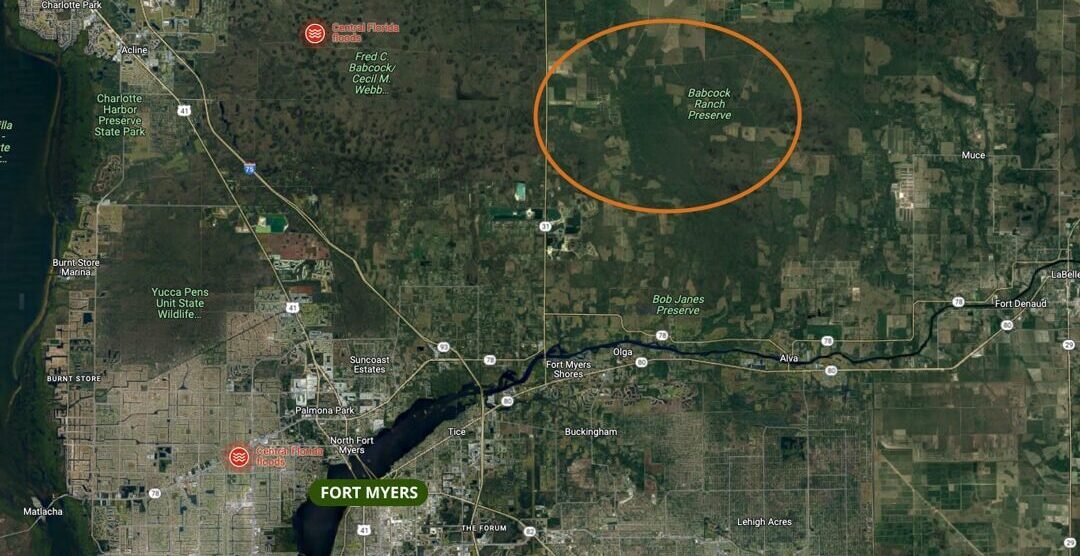Keeping the Power on During a Hurricane
As climate change continues to fuel ever-worsening storms and natural disasters, some people are taking resilience measures into their own hands. Residents at Babcock Ranch in Florida suffered minimal damage from the near-category 5 Hurricane Ian that devastated cities like Fort Myers along the coast.
Babcock Ranch Endures Hurricane Ian
Twelve miles northeast of Fort Myers lies Babcock Ranch, home to thousands of people who receive power from the town’s nearby solar array, which is made up of 700,000 individual panels. Developers of the Ranch designed the community to prioritize climate resiliency, a forward-looking measure, as Florida has become increasingly vulnerable to record-breaking storm surges, catastrophic winds, and historic rainfall.
No detail was missed in the meticulous planning of this neighborhood, where streets are designed to flood so that houses don’t, native landscaping along roads helps control stormwater runoff, and power and internet lines are buried to avoid wind damage. Certain residents have even gone a step further to install panels and battery systems for their own homes, adding another layer of protection against power outages.
When Hurricane Ian came barreling through southwest Florida last week, it was a real test to the resilience of the community. The storm wreaked havoc on Fort Myers and more than 2.6 million residents in the state lost power. At Babcock Ranch, however, the lights remained on.
And it wasn’t just the electricity — residents of the eco-conscious, solar powered town also retained access to water and internet as well, and the community suffered no major structural damage. The hurricane traveled directly over the Ranch, yet residents there may be some of the most fortunate in Southwest Florida.
Solar Panel Resilience
To endure a storm like Hurricane Ian, solar panels are rigorously tested and crafted to be strong and durable. Today’s panels are designed to withstand even the harshest outdoor conditions, as manufacturers understand the importance of panels enduring high winds, hail, and heavy rain.
In fact, most manufacturers test and certify their solar panels to withstand hail up to one inch in diameter falling at 50 miles per hour. Most are also certified to withstand hurricane force winds, and the aluminum and glass casings that hold a solar panel’s solar cells are highly waterproof, even during extreme rain.
Solar Panel Longevity
Not only must solar panels be built to withstand all extreme weather conditions, they must also be built to withstand time. Solar panels are expected to last at least 25-30 years with minimal change in energy output. And they do. After 25 years, solar arrays don’t just stop producing electricity, they continue to produce, just at rates deemed significantly lower than when they were first installed. This is referred to as a solar panel’s degradation rate.
On average, solar panel output falls by 0.8% each year, while premium manufacturers offer degradation rates as low as 0.3%. Degradation rates industry-wide are constantly improving as solar panel technology improves. And as the technology improves, we see that a panel’s life expectancy is generally much longer than 25 years. Solar panels will continue to work for many decades, given they aren’t physically damaged by wind, debris, or any other external factors. This is primarily because solar panels don’t have any moving parts – they rarely break from within and are usually only damaged by outside forces like a poor racking setup or inclement weather.
Babcock Ranch Becomes a Resilience Hub
Thanks to durable technology and careful design and planning, the Babcock Ranch community is able to not only keep its residents safe, but provide a place of refuge for some of Ian’s hardest-hit victims. Babcock Neighborhood School became a shelter with continuous power delivered to those in need thanks to its solar array, which generated sufficient power even during critical power demand. In this case, solar in schools went beyond education and training to provide backup power to the community, becoming a resilience hub.
Stay tuned for developments this fall at Bryan’s CTE Complex as NATiVE debuts some exciting and resilient solutions in Aggieland with the Texas ISD Solar Apprenticeship Program.
As weather becomes more extreme, it’s critical to consider how net-zero and sustainable communities like Babcock Ranch could be dispersed around the country to serve as backup power. Having access to power can be life-saving in a climate catastrophe, and resilience hubs such as this one can play a major role in keeping people safe. Residents living in areas with volatile weather would be pragmatic to consider designing a home that can endure extremes. As we’ve learned, solar is a crucial component to building a resilient home or community. #TakeYourPowerBack


































[…] to see many more solar owners using less power from the grid, and becoming more self-reliant and resilient. Storage is one component that increases solar’s reliability by making solar energy available at […]
Wow, this blog is impressive, didn’t know solar panels could withstand such heavy winds and rough climate conditions. Thank You for sharing!